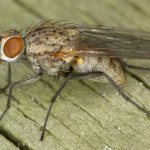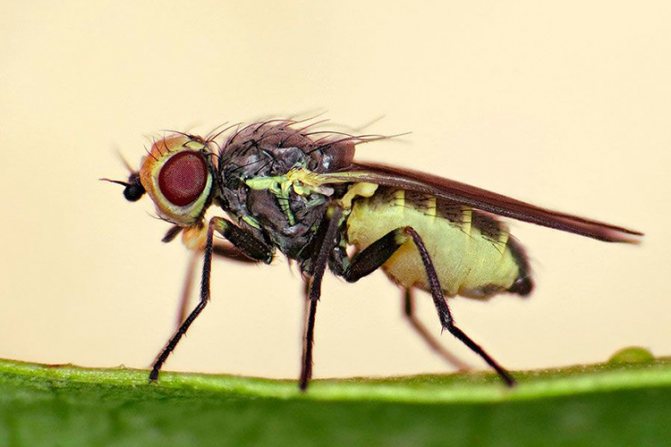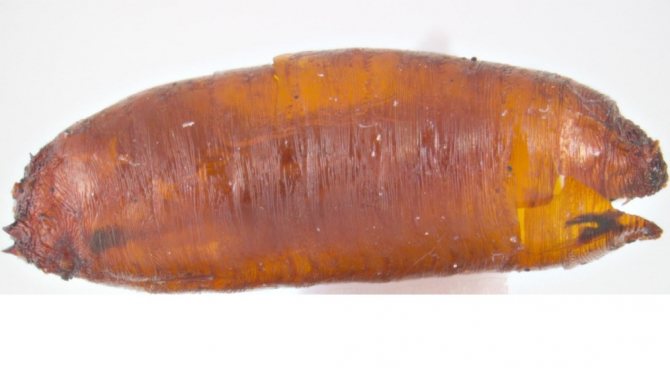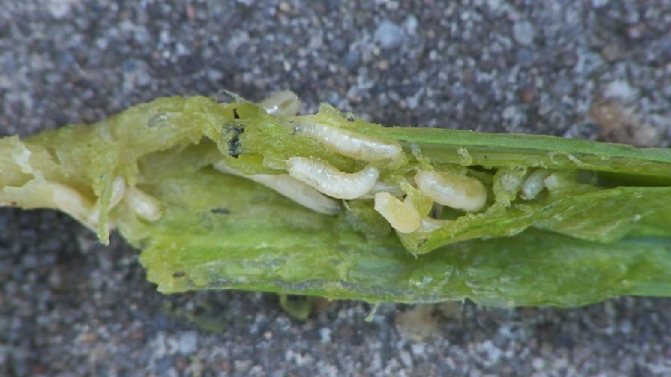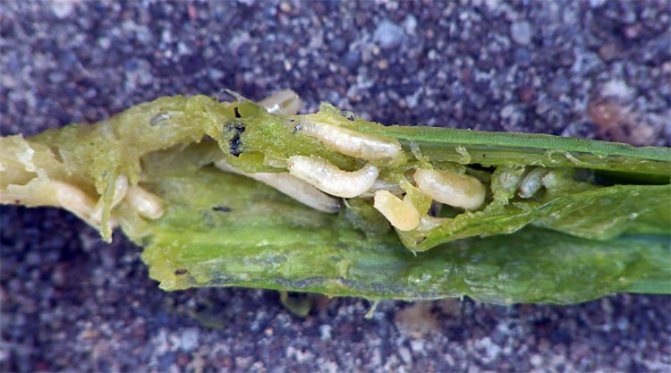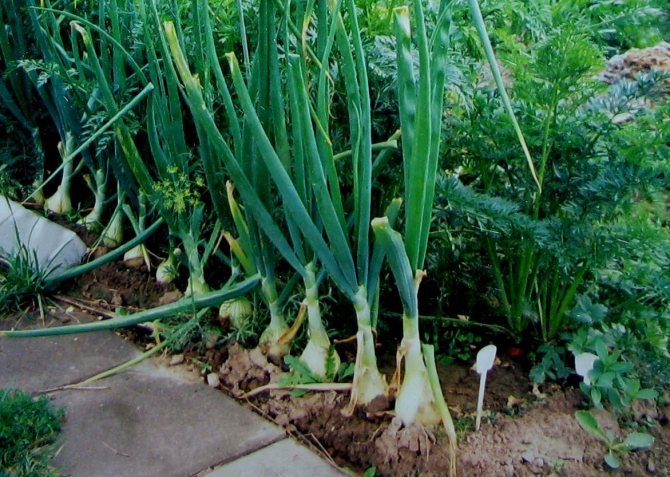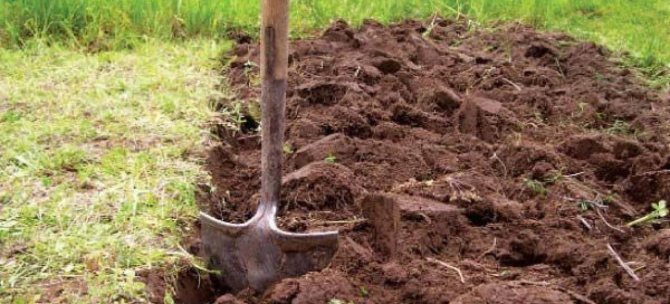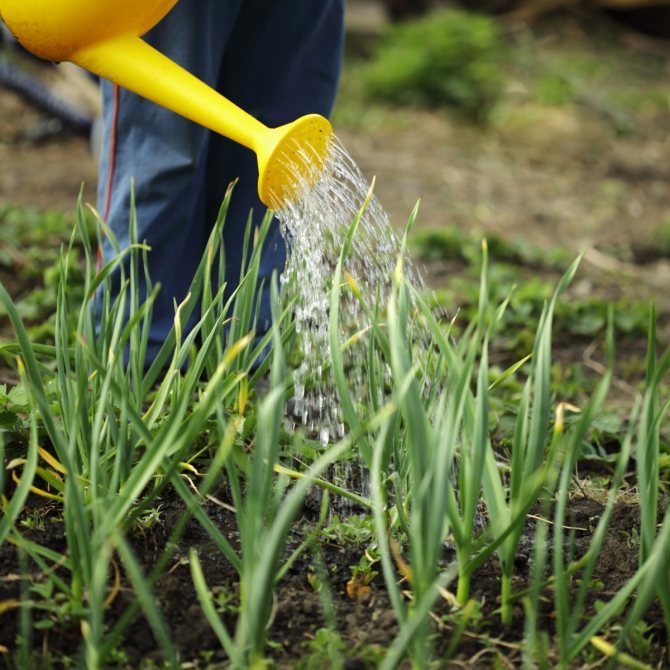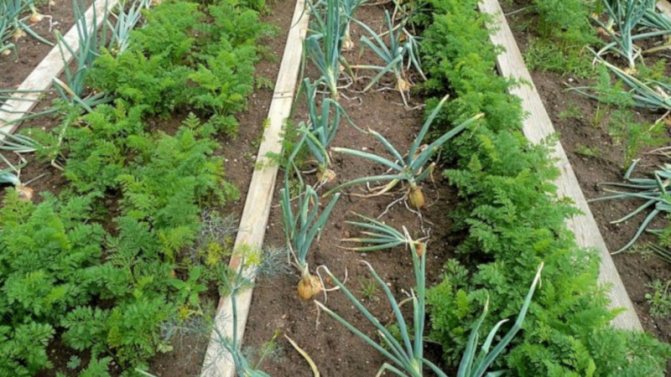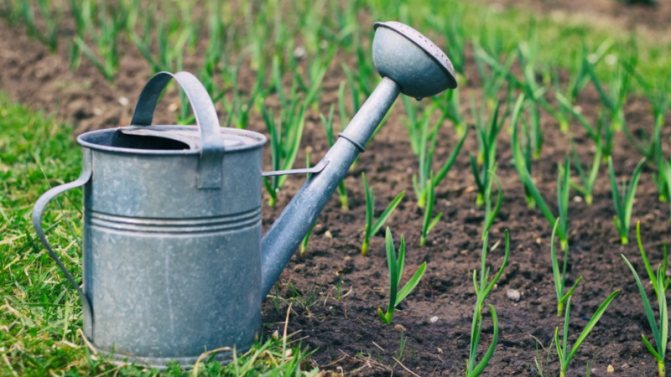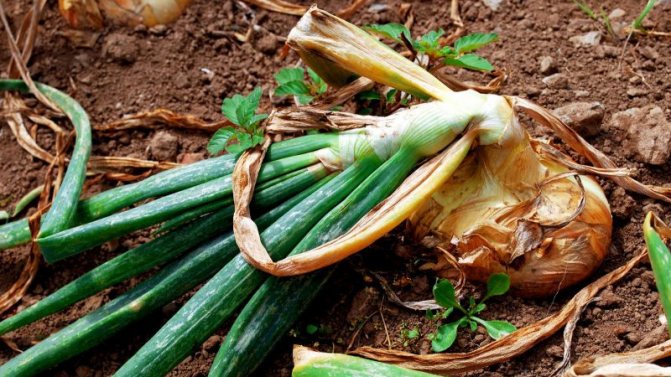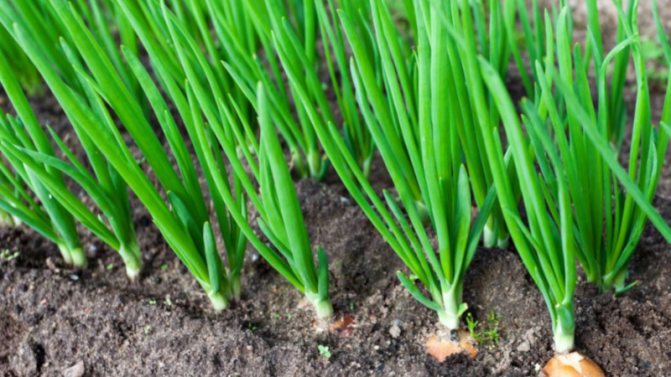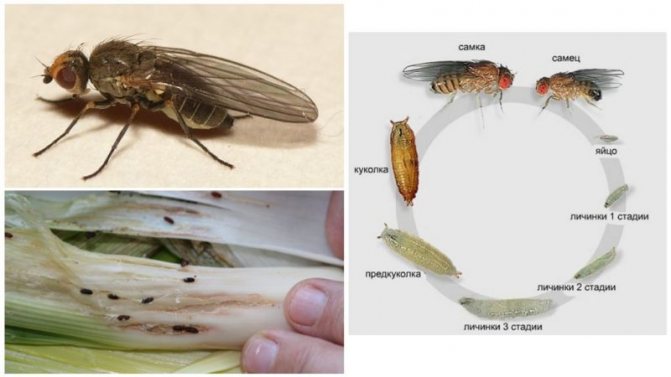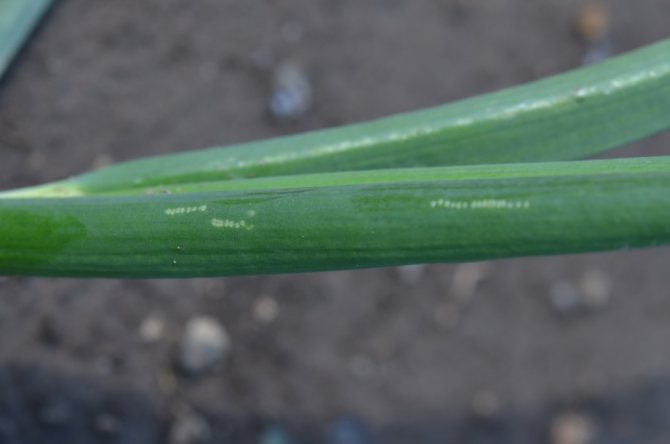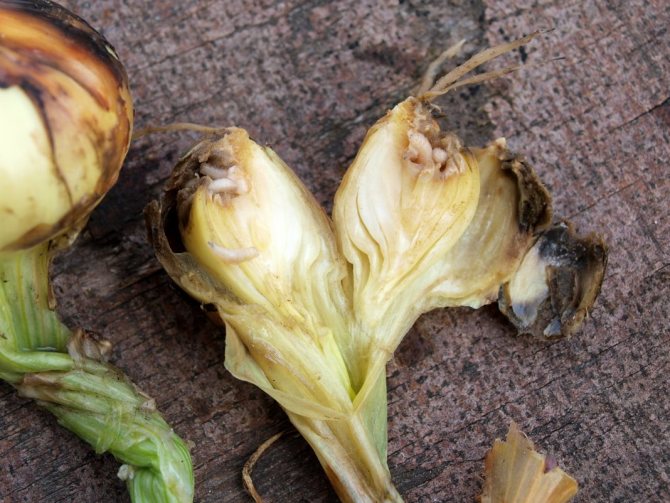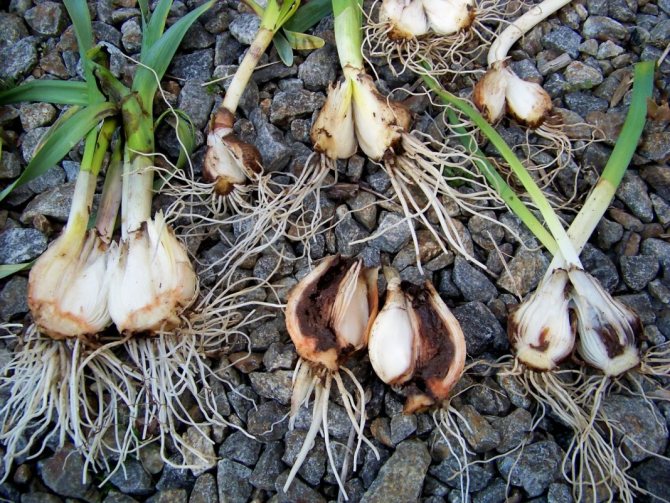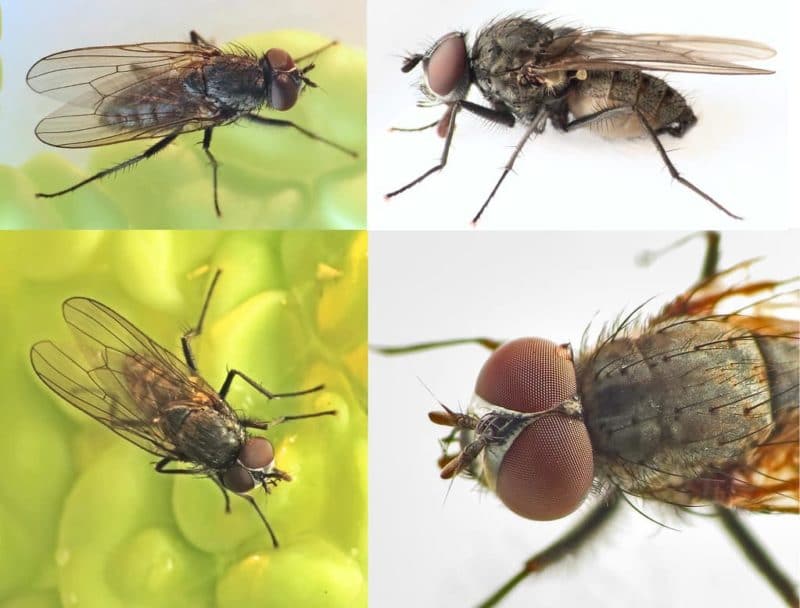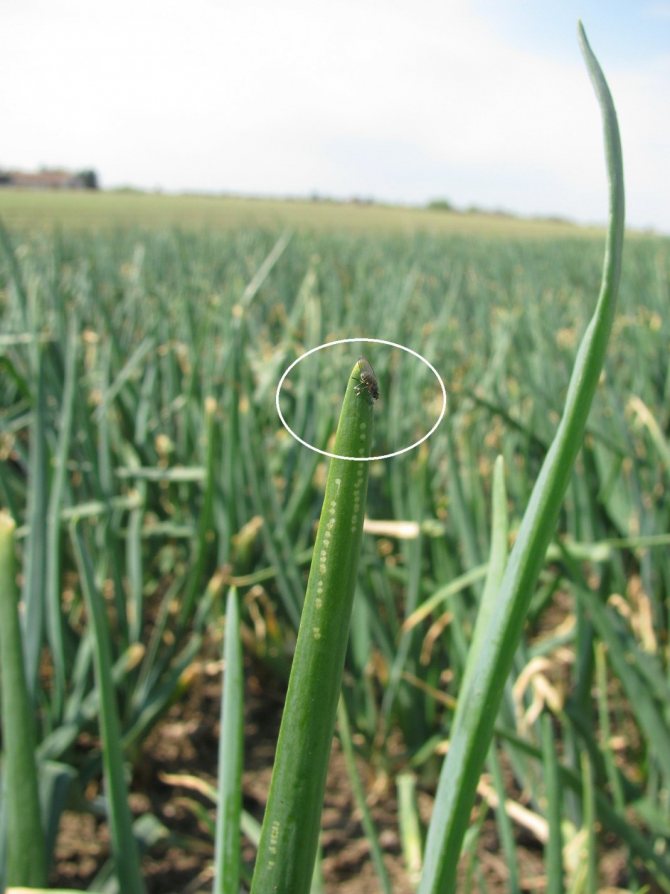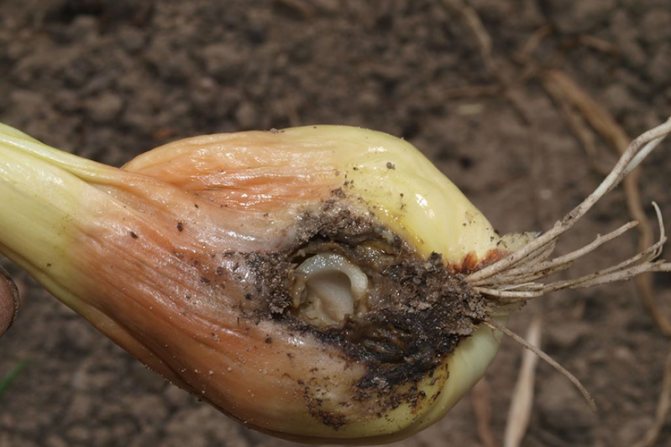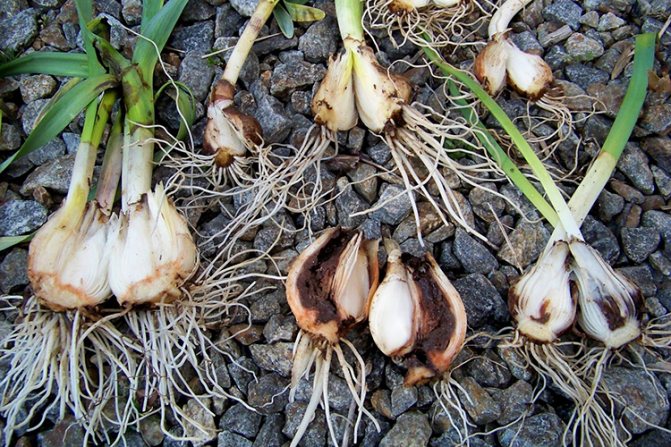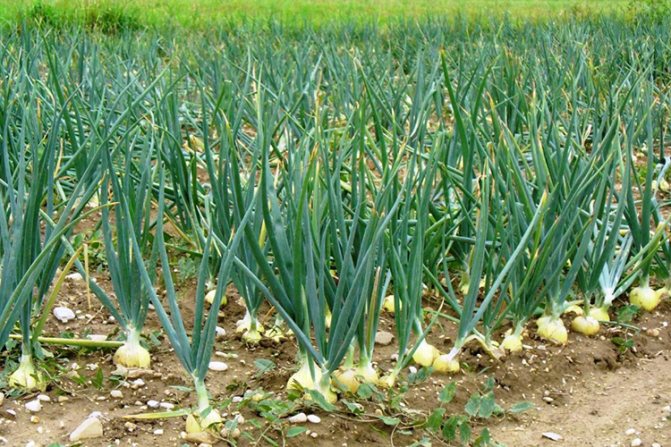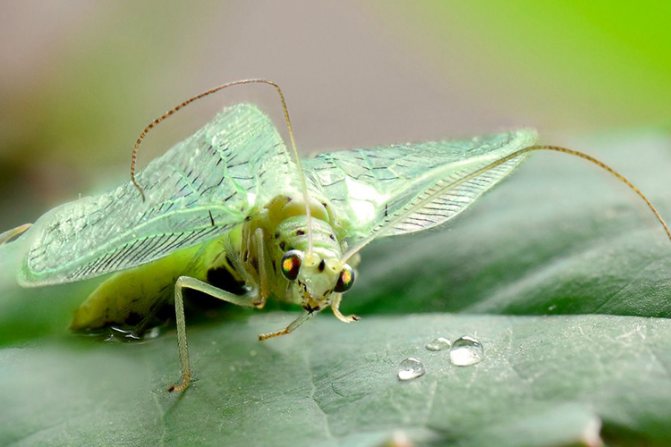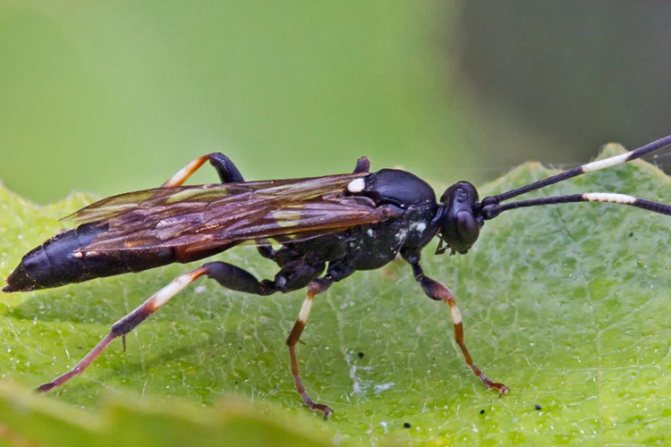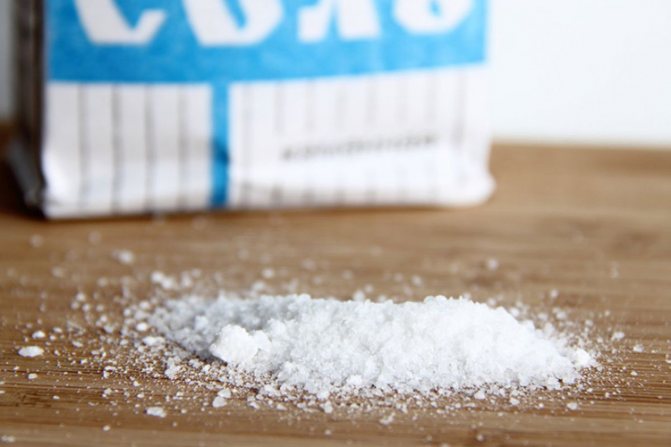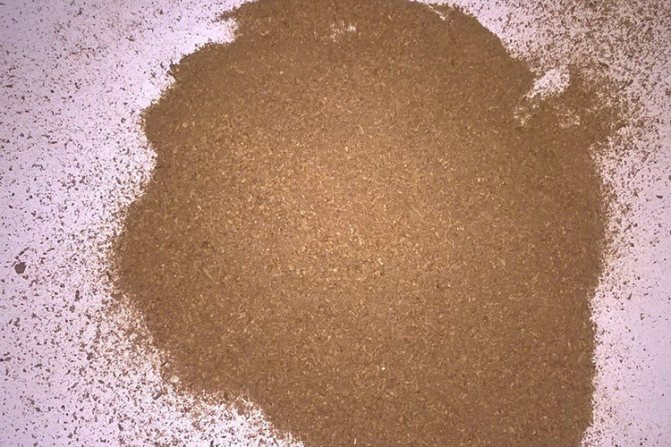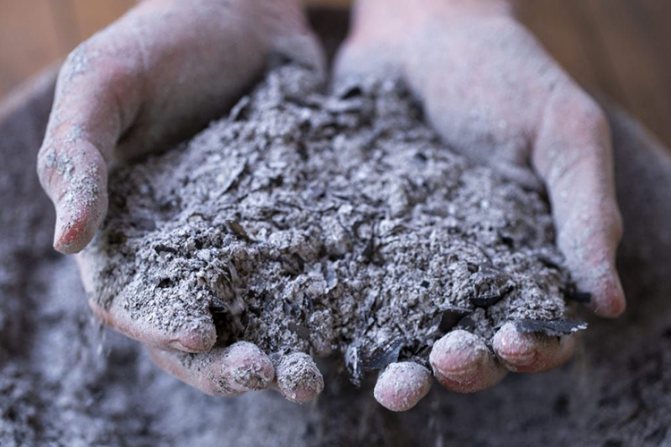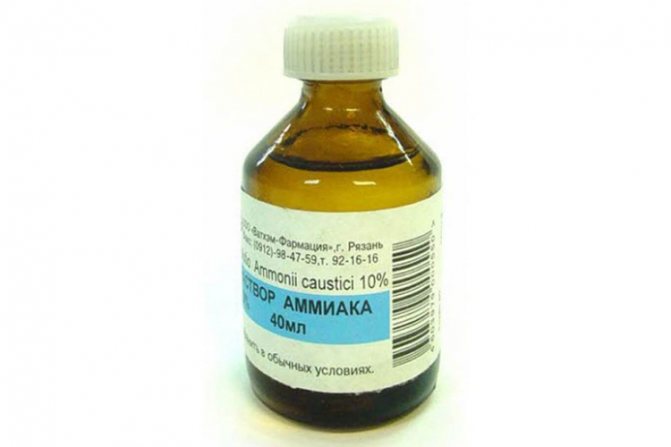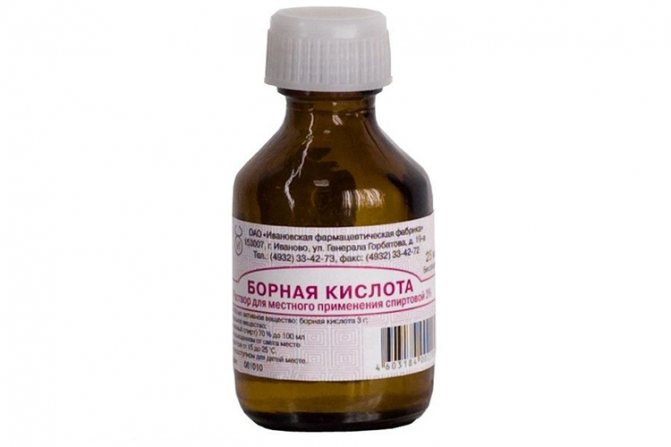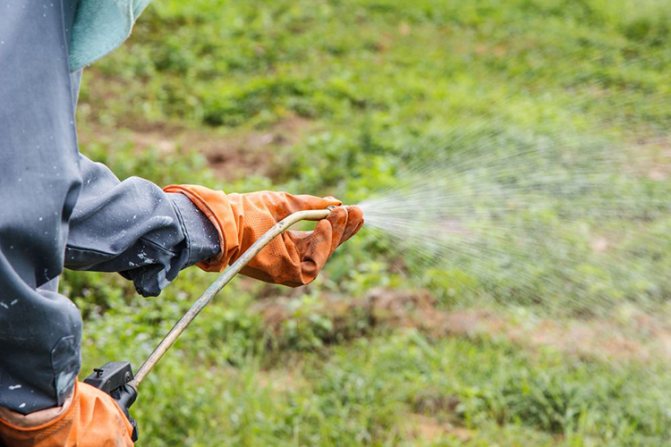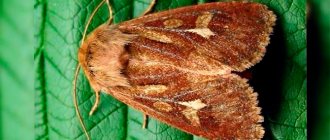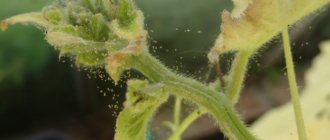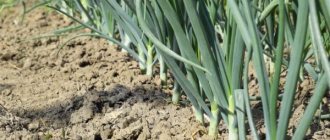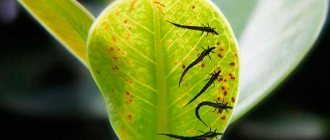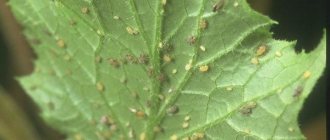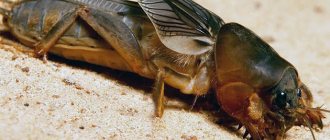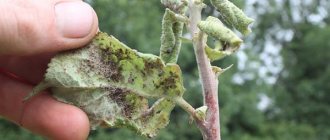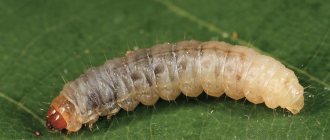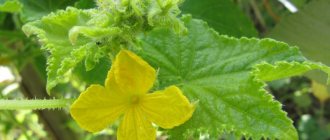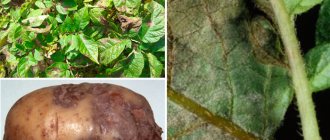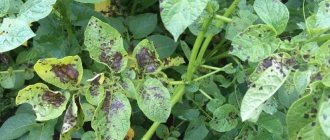This fly is called an onion fly because it most often attacks onion plants, but sometimes it can attack garlic and even bulbous flowers. Usually, signs of onion damage by an onion or leek fly are visible to the naked eye. If the onion on your site suddenly began to grow slowly, if its leaves-feathers began to turn yellow, wither and dry out, and the smell from the onion does not come from an onion at all, then it is definitely affected by an onion fly. If a bulb is dug up from the affected plants, then it will be possible to see a plaque resembling putrefactive on it, subsequently the bulbs will become soft and it will be impossible to either store or eat them.
Onion fly (Delia antiqua). <>
Life cycle features
The body length of the onion fly is approximately 6-8 mm. The insect is light gray in appearance, similar to the house fly. Females differ from males by the presence of a pronounced dark stripe. Eggs are laid by females in spring in clutches of 5-25 eggs. on the seedlings of bulbs that have appeared from the ground. White eggs are oblong in shape. Upon closer examination, one can see longitudinal grooves on them, the length of which is about 1 mm.
The larva emerges from the egg very quickly - in just 5-8 days. Its body, narrowed towards the head, can reach 10 mm. It feeds on fleshy bulbous scales. The larvae that emerged from the same clutch always keep in groups and eat out all the insides of the bulb.
Three weeks later, the larvae crawl into the soil, where they pupate after a while. Young flies soon appear. Eggs are laid by females almost throughout the summer.
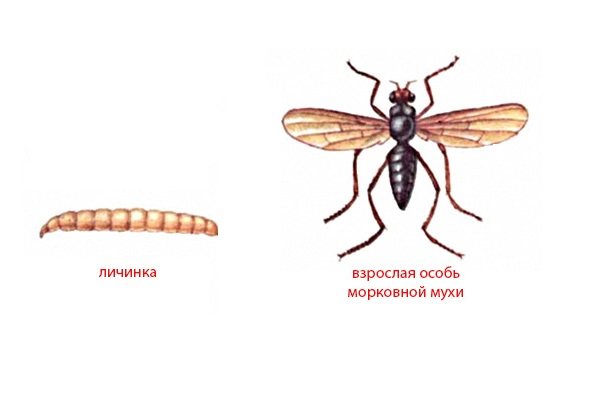
Spring flight for onion flies begins in April, during the cherry blossom season. It usually lasts a month and a half. After the appearance of a new generation of pests, the egg-laying process begins again. Onion flies hibernate, turning into pupae and settling in the soil at a depth of 10-20 cm. This type of pest can live wherever plants of the bulbous family are grown.
General characteristics
The onion fly is a small, ash-gray insect. It is distributed in all climatic zones suitable for growing onion crops. It cannot be found only in deserts, as well as in permafrost areas.
In one season, the onion fly can produce one or two generations of offspring, and in the southern regions - three or even four. Such fertility leads to the fact that the pest can completely ruin the seasonal harvest of onions and garlic.
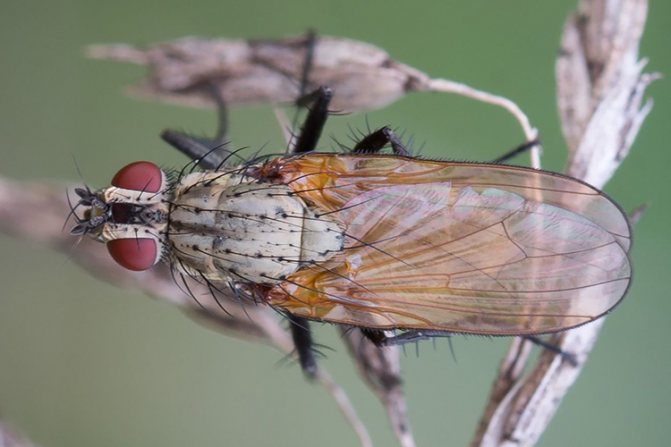

Therefore, it is important to carry out preventive actions to exclude the appearance of the parasite and begin to fight it immediately after the first signs of plant infection appear:
- yellowing and falling of feathers;
- the formation of putrefactive plaque on the feathers and the top of the bulb;
- the appearance of an unpleasant smell of rot on onion beds.
It is an insect with complete transformation. Its development includes the phases of the egg, larva, pupa, and imago (an adult is an adult). The onion fly hibernates in the larval or pupa phase in the ground. The flight of adults begins with the onset of stable warm weather, approximately at the end of April - at the beginning of May.
The imago is attracted by the smell of onion crops, to which it flies to lay eggs (they are white and oblong in shape).The imago places them in the beds directly next to the plants or in green shoots.
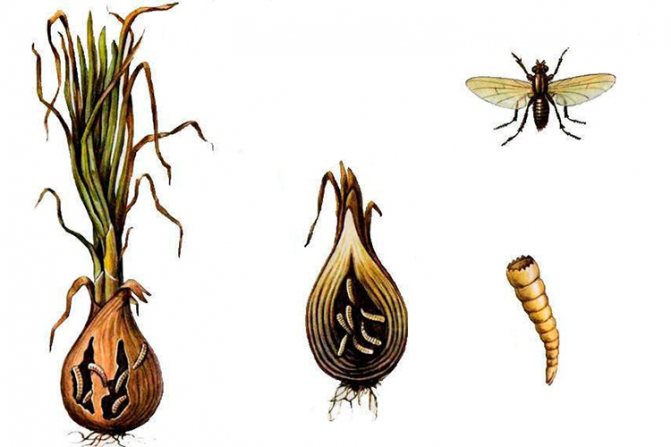

The larvae hatch after about a week and are immediately buried in the ground. They begin to bite into the bulb, making large cavities in it. Onion fly larvae are the most dangerous for garden crops, as they tend to stick together and attack the plant together. The bulb begins to fade, its scales become soft, and in the future it can no longer be used for food.
Signs of onion infestation
The larvae of the pest, when they are born, immediately begin to actively suck out the juice of onion plants. In addition, they feed on juicy pulp. As a result, the affected plant begins to turn yellow from the very tips of the feathers. The arrows at the bow become drooping, often they twist in a spiral.
The bulb in which the pest has eaten out the core will certainly die. Moreover, in addition to onions, garlic and other bulbs, almost all cultivated plants grown under the film, for example, greenhouse or greenhouse cucumbers, are under threat.
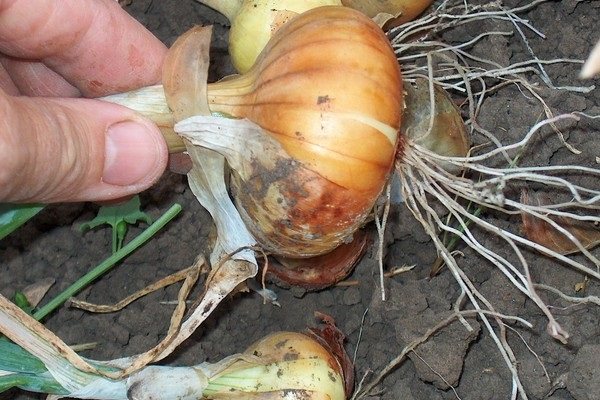

The fight against onion flies should be started immediately after the following signs are detected:
- clarification, and then yellowing of onion feathers, followed by drying;
- a state of general oppression of bulbous;
- the appearance of an unpleasant, often putrid odor.
If at least one of the above signs appears, be sure to pull out a few bulbs and examine them carefully. Since the larva of the pest is large enough, it is impossible not to notice it. In appearance, it is similar to an ordinary small maggot.
Agrotechnical actions
You can prevent the development of the parasite if you follow the steps outlined below.
Compliance with crop rotation
Onions, as well as other crops that are affected by the onion fly, are not recommended to be returned to their original place earlier than after 3 years. After onions, cucumbers, cabbage, and tomatoes are usually planted for 3 years. And then you can plant onions on the ridges again.
Thermal disinfection of bulbs
Seed material must be properly prepared before planting. If onion sets are used for planting, it must be soaked in water heated to 45 degrees for a quarter of an hour. Hot water will kill all pathogenic microflora, including insect larvae.
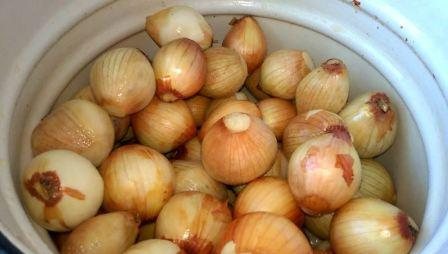

Mulching
This agricultural technique also has a good effect. If you mulch the aisles and paths with sawdust or chopped straw, an artificial barrier is created for the pest and it is difficult for him to get to the bulbs.
Use of Bazudin
In late spring, experienced gardeners recommend adding the drug Bazudin to the soil, which prevents the spread of onion flies. To do this, take a liter can of fine sawdust and mix them with 60 g of Bazudin. This amount will be enough to distribute it over an area of 35 m2.
How to get rid of onion flies in the garden?
The appearance of an onion fly, like most other pests, is easier to prevent than to fight later. For preventive purposes, insecticides can be used to kill insect larvae.
However, most modern drugs contain toxins that tend to accumulate in plants, therefore, after being eaten, they end up in the human body. Safe measures to prevent the appearance of pests include:
- Warming up the planting material immediately before planting at a temperature of 22-25⁰С. To this end, you need to dissolve salt (1 tbsp. L) in warm water (1 l), pour the resulting solution over the plants and leave them for 3 hours. After that, the bulbs must be washed with water and soaked in a weak solution of manganese for 2-2.5 hours.After this time, the planting material should be rinsed well and dried a little.
- The area chosen for planting onions must be well ventilated. Onion plants should be planted in grooves, alternating with carrots - this way you can ensure mutual assistance of plants to each other, since the carrot fly does not like onions, and the onion fly does not tolerate carrots.
- Each year, the planting of the culture must be done in a new place. After harvesting, you should dig up the area where the onion was grown - this way you can get rid of the larvae of the pest, which, once on the surface, will definitely freeze out in winter.
If the onion fly cannot be prevented, more drastic measures will need to be taken. For this, there are a large number of effective folk remedies and chemicals.
Are they dangerous, what is their harm
Onion flies appear in late spring. They lay their eggs on young seedlings of onions. After 8-10 days, larvae appear, penetrating the inside of the bulbs for food, as a result of which they deteriorate and disappear.
In kitchens, insects spoil the food on the surface. They lay eggs on fruits, vegetables. Winged insects are carriers of various diseases. An onion midge bite can cause a severe allergic reaction accompanied by swelling. This is especially true for people prone to allergies.
On unpackaged products, pests lay eggs that can enter human food. Midges stain the surface of furniture, walls. During flight, it can enter the respiratory tract of a person.
How to deal with an onion fly using folk methods?
To combat the onion fly, you can use proven folk remedies, many of which are very effective. One of the easiest ways is to sprinkle the beds with infusions of various herbs. Fir, valerian, mint or wild rosemary are commonly used. However, such treatments should be used constantly, starting from the summer, in order to prevent the pest from attacking the plantings.
Many growers use a saline solution to protect against onion flies. However, it can be used only in cases where the height of the sprouts does not exceed 5 cm. To prepare the solution, it is necessary to dissolve salt (400 g) in a bucket of water. After that, you need to water, trying to prevent the solution from getting on the onion feathers. After 3-4 hours, the beds should be watered with plain water. It is worth noting that, despite the fact that this method is effective in combating pests, after its application, the quality of the soil deteriorates somewhat.
A good onion fly remedy is clean, free of any impurities, wood ash. It is necessary to powder the plants with it and simply sprinkle the soil in the rows and aisles. In addition to the fact that this tool fights flies, it is also an excellent fertilizer.
Many vegetable growers use tobacco dust, which is the basis for preparing the infusion: 200 g of raw material must be poured into hot water (10 l) and infused for 2 days. Spraying with this infusion is carried out twice, the interval between treatments is 1 week. To prevent the appearance of pests, it is advisable to sprinkle the aisles with tobacco dust.
As a prophylaxis for infection of plants with bulbous flies, ammonia is used. For watering plants, you should prepare a working fluid by dissolving ammonia (1 tbsp. L.) In water (10 l.). If the plantings are already infected with onion fly, then two more treatments with a solution of ammonia will be required with a break of a week. It is worth noting that this tool enriches the soil with nitrogen.
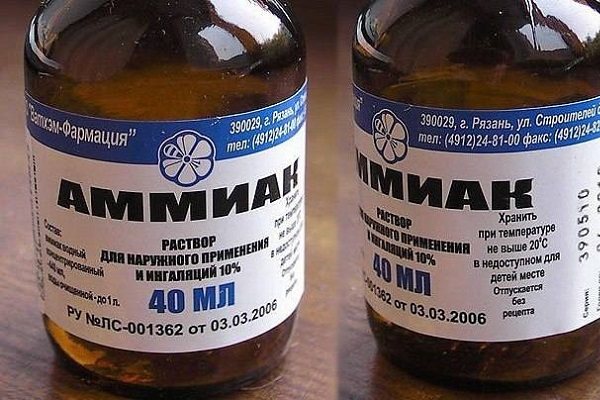

Onion fly treatment can also be done with a kerosene solution. To prepare it, dissolve 2 tbsp. l. means in 10 liters of water. Watering is done at the root when the feather height is 10 cm.This procedure should be carried out daily for 7-10 days. After 3-4 hours after watering, the plants should be watered abundantly with plain water.
An effective remedy for onion flies is a mixture of mustard and ash (ratio 1: 3), which is sprinkled with aisles. You can also use whey, which effectively fights not only onion pests, but also powdery mildew. To prepare the solution, you need to dilute the serum in water (proportion 1: 8). Spraying plants with the resulting product is carried out in the evenings and mornings.
Pest prevention
High-quality soil preparation for the beds in the fall is the key to a healthy and large harvest. In order to avoid the onion fly invasion in the summer, the following measures must be taken:
- Apply crop rotation in the garden - constantly change the places of crops grown and prevent onions from growing in the same place for 2-3 years in a row.
- Carefully harvest the harvest and the remains of last year's plants, burning them.
- It is advisable to plant onions in the place where carrots, tomatoes or cabbage grew last year - their juices scare off parasites.
- To do autumn plowing is an excavation with the overturning of layers, thanks to which all the larvae freeze out in winter.
If the land is fertilized and cleaned in a timely manner, then in summer the onion beds will delight the owner with frequent and green shoots, and the bulbs will retain their strength and elasticity.
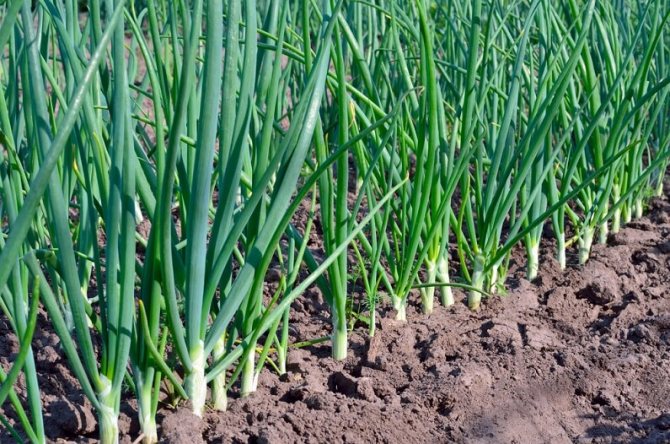

Previous
Onions Onions Exhibiting: Planting and growing from seeds
Next
How to properly deal with Powdery Mildew on onions
Onion fly chemicals
If the use of folk remedies does not bring the desired results and the pest continues to destroy the onion beds, you will have to resort to the use of insecticides. The list of drugs acceptable for use in this case includes:
- "Medvetoks", "Mukhoed", "Zemlin", which are based on diazinon. The preparations are introduced into loose soil when the bulbs are planted. After their application, the larvae die due to damage to the chewing and suction apparatus.
- "Aktara" - the active ingredient of the drug is thiamethoxam. Spraying with this drug can be carried out during the growing season. It affects the nervous system of pests.
- When using the drug "Karate Zeon", which contains lambda-cyhalothrin, the nervous system of insects is also destroyed. Can be used throughout the entire growth period.
- Sochva. This preparation contains a water-soluble substance obtained by burning wood.
Onion flies in the apartment
Flowers of the bulbous family are very popular among flower growers, because they are unpretentious, require minimal maintenance and usually bloom for a long time and beautifully. Lilies, crocuses, amaryllis, hippeastrum and other flowers of this species look great on the windowsill in the apartment. However, they can also be affected by onion fly larvae. Therefore, when growing plants on a windowsill, it may become necessary to combat these insects.
To destroy onion flies in an apartment, as well as in vegetable beds, you can use folk remedies and chemicals. The use of the first is absolutely safe for both people living in the house and for the plants themselves. However, modern insecticides are more effective and can quickly solve the problem.
Use of purchased insecticides
If home remedies prove to be powerless against an insidious pest, you must use one of the chemicals that are freely available in stores. These chemicals are sold in tablet form, liquid or powder. Before use, they should be dissolved in raw water strictly according to the instructions on the package.
The following drugs have gained the greatest popularity against onion fly:
- Aktara, Mukhoed;
- Tabazol, Karate Zenon;
- Medvetoks, Sochva;
- Intavir, Zemlin;
- Diazinon, Immunofitofit;
- Bazudin, Creolin;
- Iskra, Alatar;
- Moveton Nova.
Using such insecticides, onion flies and their larvae can be completely destroyed in a short time.
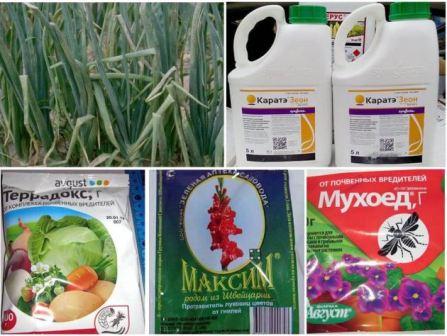

Pest control in the greenhouse
People who grow vegetables often come across this insect. After the onion fly settles on the plant, the onion feathers immediately turn yellow. If green onions are grown for sale in a greenhouse, then this situation is immediately worrisome. Indeed, with a large number of pests, you can lose a significant part of the crop.
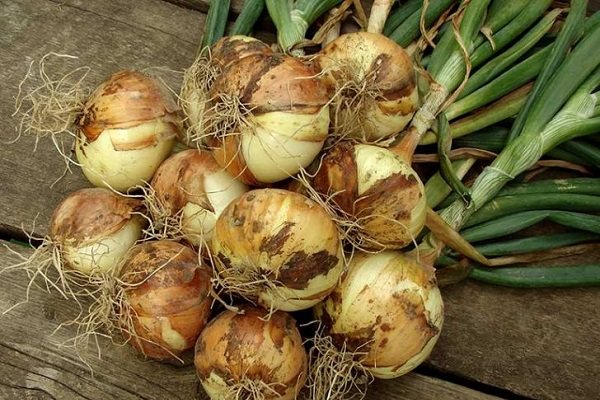

You can prevent the invasion of pests into the greenhouse by applying nitrogen fertilization. And if insects have already been found, then you need to immediately carefully remove the damaged plant from the soil and lower the bulb into the water - the larvae will soon die. This procedure is effective only when the larvae have not yet turned into pupae. If you do not deal with them on time, then young flies will soon appear.
Onion flies pose a serious threat to crops of the bulbous family. However, protecting plants from pests in the beds or in the greenhouse is a completely doable task. Correct implementation of the recommendations for pest control will allow you to get a high yield of onions on time.
How to make gnat traps?
Onion gnats sometimes multiply on such a scale that simply getting rid of rotting vegetables does not bring the proper and quick result. In this case, the hostess will have to take a number of more radical measures to get rid of uninvited guests. How to make baits with your own hands, where insects will die? Here are some good ways:
- Take a plastic disposable glass of 0.5 liters, throw a piece of fruit at the bottom or pour a little sweet juice (compote). Wrap the glass with cling film, making several small holes in it. Leave the trap in the kitchen overnight, quickly put the glass in a tight bag in the morning and take it out of the house.
- Pour juice into the jar at the bottom or put overripe fruit, cut into slices. Close the top of the jar with a paper funnel, placing it with the narrow side inward. Leave the jar on the table at night, pour water into it in the morning - all midges will die.
- Pour water into a flat plate, drip a little citrus-scented dishwashing liquid into the water. Insects will land on the water, but will no longer be able to take off.
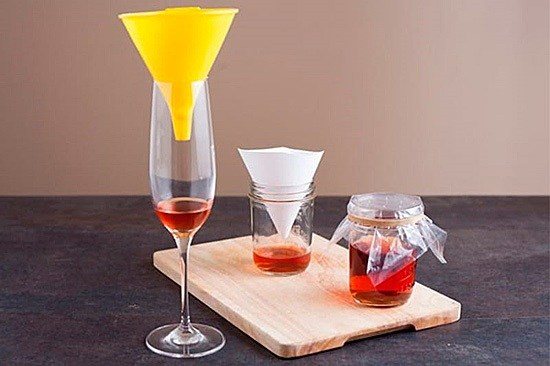

You can also get rid of flies with drugs. Now in any store special adhesive tapes and sheets are sold, to which harmful insects quickly stick. It is not recommended to use aerosols and other chemical preparations, because their remains can get on the table or into food, thereby harming a person. But airing the apartment and mechanically removing pests with a towel through the window, sucking them in with a vacuum cleaner will definitely not harm and are perfect as one of a set of measures to combat midges.

